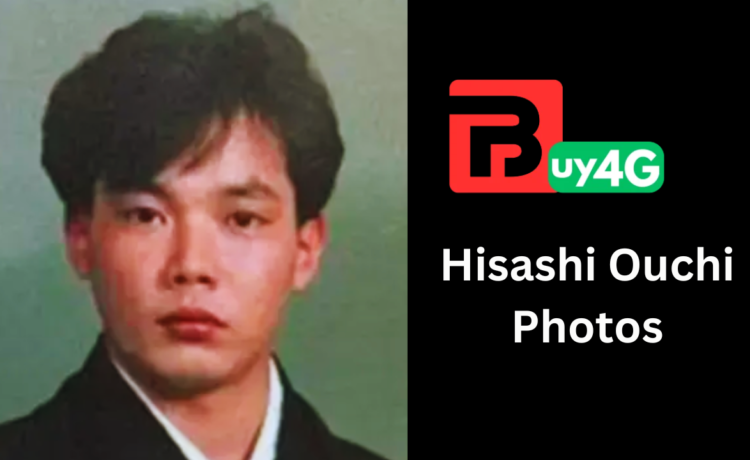The harrowing story of Hisashi Ouchi photos is a powerful reminder of the devastating effects of radiation exposure. Hisashi Ouchi’s name has become synonymous with the dangers of nuclear power, and the graphic Hisashi Ouchi photos that have circulated serve as a stark cautionary tale. This article explores the tragic details surrounding Ouchi’s case, focusing on the Hisashi Ouchi photos, the ethical debates that followed, and the lessons learned from this disaster.
Background Information on Radiation Exposure
Radiation exposure occurs when an individual is subjected to high levels of ionizing radiation, which can cause severe health problems. There are different types of radiation, such as alpha, beta, gamma, and neutron radiation. Excessive exposure to any of these can result in serious consequences, as seen in the case of Hisashi Ouchi photos. Radiation disrupts cells at the atomic level, leading to DNA damage, cancer, and, in extreme cases, death.
Who Was Hisashi Ouchi?
Hisashi Ouchi was a technician at the JCO Tokaimura nuclear fuel processing plant in Japan. Born and raised in Japan, Ouchi worked at the nuclear facility, never imagining that he would become the subject of worldwide attention through the Hisashi Ouchi photos. His life took a tragic turn after the Tokaimura nuclear accident, which exposed him to lethal doses of radiation.
The Tokaimura Nuclear Accident
On September 30, 1999, the Tokaimura nuclear accident occurred when Hisashi Ouchi and two of his colleagues improperly handled uranium, resulting in an uncontrolled chain reaction. This accident caused a criticality event, releasing deadly radiation. Hisashi Ouchi received the highest dose of radiation, leading to the infamous Hisashi Ouchi photos, which depict the horrifying effects of radiation on his body.
Immediate Consequences of the Radiation Exposure
Hisashi Ouchi was exposed to a radiation dose of over 17 sieverts, which is far beyond a lethal amount. The radiation caused severe burns, cellular breakdown, and organ failure. These events are captured in the Hisashi Ouchi photos, which show the extent of the damage inflicted on his body. He was immediately transferred to the University of Tokyo Hospital, where doctors faced the monumental task of saving him.
Hisashi Ouchi’s Condition After the Accident
The Hisashi Ouchi photos clearly illustrate the horrifying effects of radiation on his body. His skin peeled off, his internal organs began to fail, and his immune system collapsed. Despite receiving cutting-edge medical treatments, including blood transfusions and skin grafts, Ouchi’s condition worsened daily. The Hisashi Ouchi photos became a chilling reminder of the fatal consequences of radiation poisoning.
The Photos of Hisashi Ouchi’s Condition
The Hisashi Ouchi photos sparked significant controversy when they were made public. These images showed his deteriorating physical condition over the course of 83 days as doctors fought to keep him alive. The Hisashi Ouchi photos were so graphic that they raised ethical questions about whether such images should be shared at all. Many argued that the release of these images was necessary to demonstrate the dangers of nuclear energy, while others felt it was a violation of his privacy and dignity.
Medical Efforts to Save Hisashi Ouchi
Doctors used every available resource to keep Ouchi alive, attempting experimental treatments and advanced medical technology. The Hisashi Ouchi photos document the progression of his condition, from skin grafts to blood transfusions. Despite these efforts, Ouchi’s body continued to deteriorate. The Hisashi Ouchi photos served as both a testament to medical advancement and a painful reminder of the limits of modern medicine when it comes to extreme radiation exposure.
Ethical Debate Surrounding His Treatment
The Hisashi Ouchi photos contributed to the ongoing ethical debate about whether his life should have been prolonged. Some medical professionals argued that continuing treatment in the face of such overwhelming odds was inhumane, while others believed that every possible effort should be made to save his life. The Hisashi Ouchi photos became a focal point in this debate, with some viewing the photos as a reason to let him die peacefully, while others saw them as evidence of his will to survive.
Hisashi Ouchi’s Death
After enduring 83 days of unimaginable suffering, Hisashi Ouchi passed away on December 21, 1999. His death marked the end of one of the most tragic cases of radiation exposure in history. The Hisashi Ouchi photos continue to serve as a powerful reminder of the dangers of nuclear energy and the catastrophic consequences of radiation exposure.
read must The Rise of Justin Chien: Innovator in Technology and Business
Lessons Learned from the Tokaimura Incident
The Tokaimura incident led to major reforms in nuclear safety protocols in Japan. The accident highlighted serious shortcomings in safety measures, and the Hisashi Ouchi photos played a role in pushing for these reforms. The incident serves as a cautionary tale for the global nuclear industry, reminding us of the risks associated with improper handling of nuclear materials.
The Impact on the Ouchi Family
The Hisashi Ouchi photos not only impacted the public but also placed a heavy burden on his family. Hisashi’s family had to endure seeing their loved one’s final days captured in graphic images that were circulated globally. This tragedy deeply affected the Ouchi family emotionally and legally, as they sought compensation and justice in the aftermath of the Tokaimura accident.
The Legacy of Hisashi Ouchi
The Hisashi Ouchi photos have left a lasting legacy in discussions about nuclear safety. His name has become a symbol of the potential dangers of radiation, and the Hisashi Ouchi photos continue to be used in debates about the ethical responsibilities of the nuclear industry. These images are a grim reminder of the cost of human error and the importance of strict safety measures.
Importance of Nuclear Safety Today
Nuclear safety remains a critical issue today. Modern advancements have made nuclear power safer, but the risks of radiation exposure still exist. The Hisashi Ouchi photos serve as a reminder of the devastating effects of radiation and the importance of maintaining strict safety protocols. The global push for nuclear safety has grown stronger since the Tokaimura incident, but the potential for accidents remains a serious concern.
Conclusion
The story of Hisashi Ouchi and the infamous Hisashi Ouchi photos is a powerful cautionary tale about the dangers of radiation exposure. His tragic death serves as a reminder of the catastrophic consequences of negligence in the nuclear industry. While advancements have been made in nuclear safety, the lessons from Ouchi’s case continue to resonate. The Hisashi Ouchi photos remain a sobering reminder of the importance of following safety protocols to prevent another tragedy like the one in Tokaimura.
FAQs
- Why are the Hisashi Ouchi photos so significant?
The Hisashi Ouchi photos are significant because they graphically illustrate the devastating effects of radiation on the human body and serve as a cautionary reminder of the dangers of nuclear energy. - How did Hisashi Ouchi’s exposure to radiation happen?
Hisashi Ouchi was exposed to lethal levels of radiation during the Tokaimura nuclear accident, caused by improper handling of uranium at the JCO facility. - Were the Hisashi Ouchi photos ethically controversial?
Yes, the release of the Hisashi Ouchi photos was highly controversial due to their graphic nature and the ethical questions surrounding the sharing of such images. - What impact did the Hisashi Ouchi photos have on nuclear safety?
The Hisashi Ouchi photos played a role in pushing for reforms in nuclear safety protocols in Japan, highlighting the need for stricter regulations. - What lessons can we learn from the Hisashi Ouchi photos?
The Hisashi Ouchi photos remind us of the catastrophic potential of radiation exposure and the importance of maintaining strict safety protocols in the nuclear industry.

